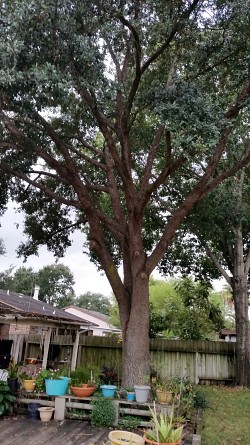3 Easy Homemade Fabric Softener Recipes
 It is my ultimate goal to make, from scratch, any and every cleaning product that I use. And so far I’m almost there! I make all my kitchen and bathroom cleansers from various combinations of baking soda, vinegar, lemon juice, borax, washing soda, and castile soap.
It is my ultimate goal to make, from scratch, any and every cleaning product that I use. And so far I’m almost there! I make all my kitchen and bathroom cleansers from various combinations of baking soda, vinegar, lemon juice, borax, washing soda, and castile soap.
I already make my own laundry soap, but one thing I hadn’t yet found a recipe for was fabric softener. And although I don’t use a ton of the stuff, it sure is nice to have around for bath towels and baby blankies and such. Plus, for those folks who live in areas with hard water, fabric softener is a must at all times.
I recently set about researching homemade alternatives to storebought softeners, and what I discovered is that there’re 3 main options. Below, I’ve outlined each one, with its pros and cons. Remember that you can add essential oils to any of these recipes. And finally, don’t forget the old tennis ball (or 3) trick! Just throw them in the dryer for a good old-fashioned softening solution.
1) The simplest of all the results is a single-ingredient “recipe”, and it’s one word I know very well: vinegar. Vinegar is cheap and non-toxic, effective and antimicrobial. It naturally softens and as a bonus, it helps to remove soap residue. Finally, vinegar aids in static reduction during drying. Just add it to the rinse cycle and you’re good to go. It doesn’t get much easier than that!
2) The second recipe is only a bit more complex, and employs my other very favorite DIY cleaning companion, baking soda. Baking soda is another natural softener, plus it helps to clean and deodorize clothes. Just add 6 cups of vinegar to 1 cup of baking soda, mix, and then use ½-1 cup during the rinse cycle.
Now, before you get all Chem 101 on me, yes, I know – this is an acid-base reaction that results in the formation of CO2 and H2O (carbon dioxide and water). Many people seem to think that, therefore, baking soda and vinegar will “neutralize” each other. But that’s not my understanding. Any acid-base reaction will form a water plus a salt, and in this case, the salt is sodium acetate (with CO2 s a byproduct). Sodium acetate is, among other things, an excellent buffer.
3) The final recipe seems to be the most popular around the ‘net. In this version, you combine 6 parts water with 3 parts vinegar and 2 parts hair conditioner. Mix it all up in a container (stirred, not shaken) and then use ½ cup (or less, as needed) per load.
This concoction seems to garner rave reviews, and if you use a super cheap conditioner, it’s very cost effective. However, there’s nothing natural about storebought conditioner, so this recipe is not for me. If you’re after “economy” and not “ecology”, this may be just your ticket.
So there you have it, the top 3 homemade fabric softening solutions. And now I’ll leave you with one final tip -- if your clothes are still too static-y as you’re leaving the house, you can always run the long side of a wire hanger over the problem (re: clingy) area. This is a classic trick that really works. You’re welcome!
Sayward Rebhal writes for Networx.
Looking for a Pro? Call us (866) 441-6648

Cleaning Average Costs
Cleaning Services Experiences

Kitchen Remodel: More Space And A Cozy Family Hangout

Garage Roof Leak Repair Means No More Dripping Onto My Drywall



